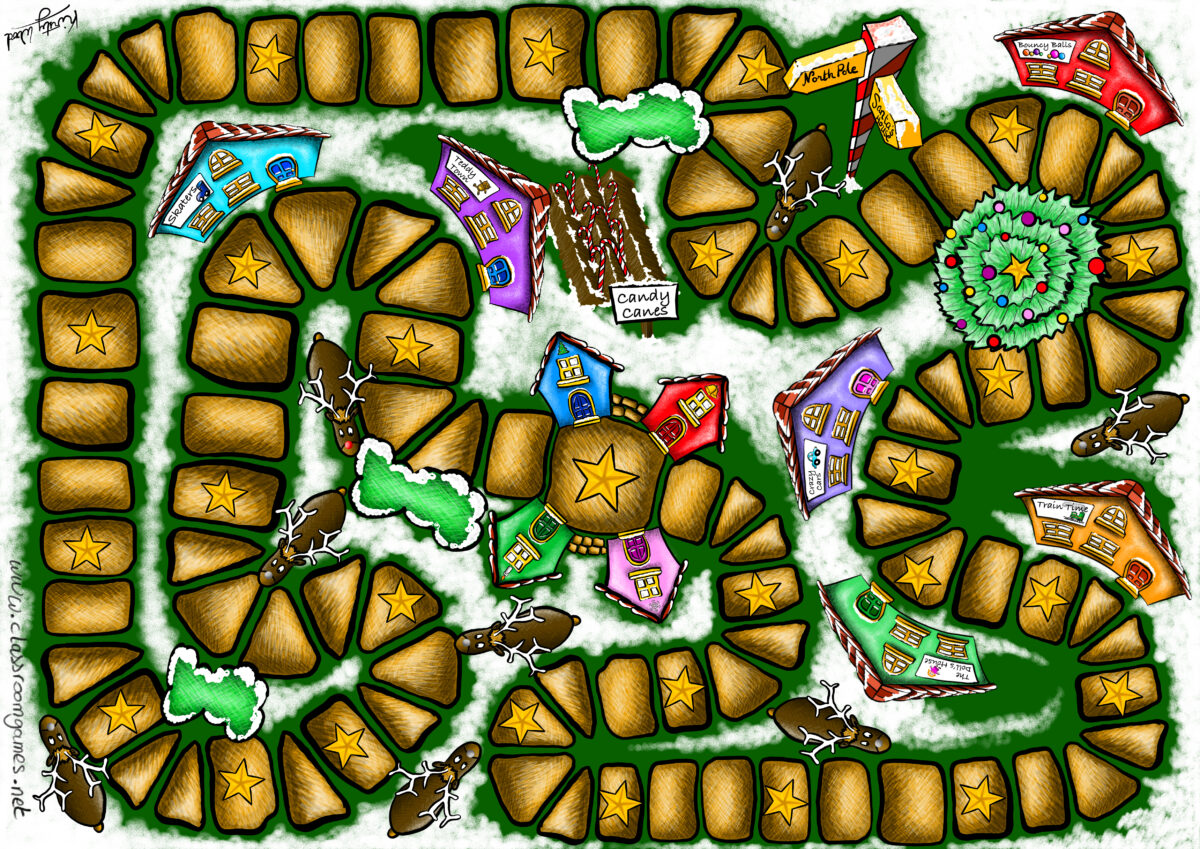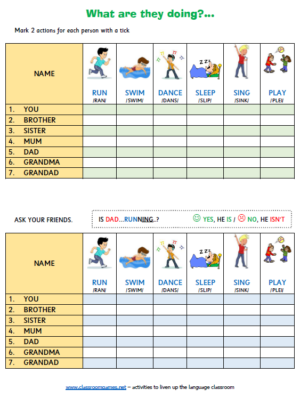This is a Christmas Board game I designed for use in class. I used it the first time this year and it worked really well.
The Story
Christmas is coming and all the Elves are working very hard at the North Pole making all the presents for Santa.
Santa gives a prize every year to the Elf that makes the most toys, but unfortunately there are some Naughty Elves in the workshop that steal each other’s toys to cause mischief. You are one of these Elves! Try and make as many toys as possible for Santa…
Setting up
- Print off the main game board in A3 (or the two A4 one and stick together) and laminate.
- Print off a few pages of the toy tokens in A4, double-sided. Laminate and cut them out. I usually have 1 page for each student playing, so if my maximum group size is 4, I’ll print 4 pages.
- You need 2 x 6-sided dice, or you can make your own special dice by buying blank ones here : https://amzn.to/3VxNKXC and drawing numbers 1 to 5, then an elf hat on the 6th side.
- You will need some game pieces for the players to move around the board. You can either print off the Elf ones that I have made here, laminate and cut them out and then use card stands such as these : https://amzn.to/3VtNc59 to hold the pieces. Alternatively you can buy generic board pieces here : https://amzn.to/3gLdSiZ or you can use things like ‘stickies’ from Lidl if you have any spare.
I make a lot of games, so I tend to make my own game pieces, dice, spinners, etc. I have linked to some of the items I usually buy. The links are affiliate ones. I’d appreciate it if you used them. It costs you nothing, but I’ll get a small commission.
Laminator A3: https://amzn.to/3VdgCoe – A4: https://amzn.to/3XzvX49
Rules
The object of the game is to collect as many presents as possible before Christmas Eve to give to Santa to deliver for Christmas to all the boys and girls. The winning Elf has the most TOYS not toy cards… so a card with 3 toys on it is worth more than a card with 1 toy on it.
- Before starting, give every player 2 random toy cards. The rest of the toy cards are put in a face-down pile at the side of the board.
- Give each player a moving piece. Everyone starts on the big centre star in the Elf village.
- Players take turns to throw the dice. They can choose to add the numbers on the dice together, subtract them, or use only one of the numbers. The aim is to land on one of the stars because when they do, they can take a toy card from the pile and increase the number of toys they have.
For example: If you throw a 4 and a 3, you can move 4+3= 7, 4-3= 1, 4, or 3 So you need to work out which combination will get you onto a star.
- If a player throws a 6 (or if you’re making your own dice, an Elf hat) they can STEAL one toy card from another player. Likewise, if they throw a double 6 (or 2 Elf hats) they can steal 2 toy cards from the same player, or one card from 2 different players. NOTE: If children gang up on one person, you could add a rule that says they have to take from 2 different people, or they can’t steal from the same person on consecutive turns.
- When they steal, they must ask properly “Please can I have your (3 scooters)” Thus, they are practicing the polite form “please can I have” plus the vocabulary for toys.
You can either play until the class ends, play until the cards run out, or play only for one or more (decided at the start of the game) complete circuits of the board, in which case you can make it more interesting by telling the students that once they get back to the big centre star they are ‘protected’. This means that no one can steal their cards, but they can still throw the dice on their turn and steal other players toy cards if they throw a 6 (Elf hat). In this case, keep playing until everyone gets back to the centre star.
Download it here:
https://classroomgames.net/product/naughty-elves-christmas-board-game/










